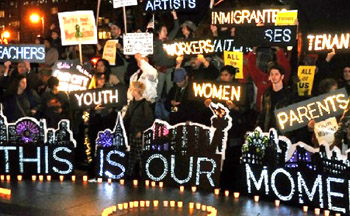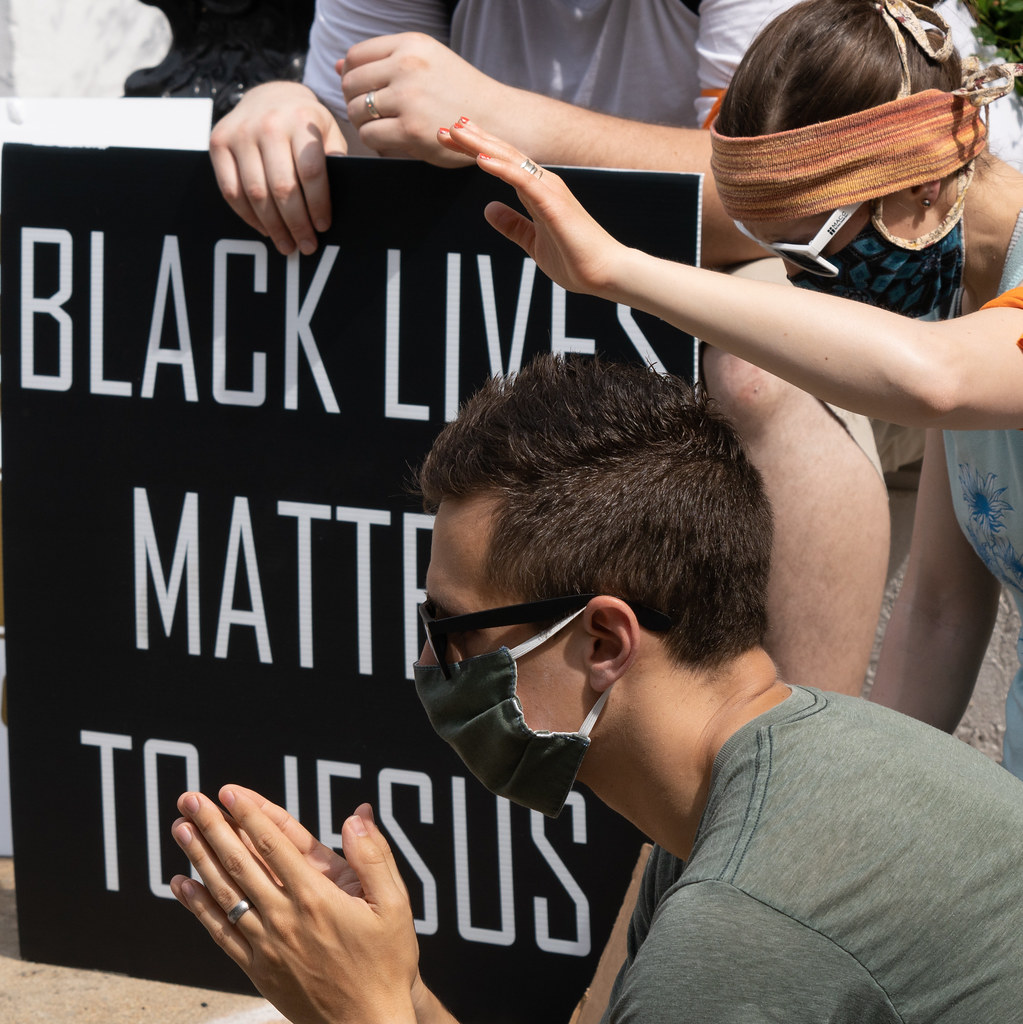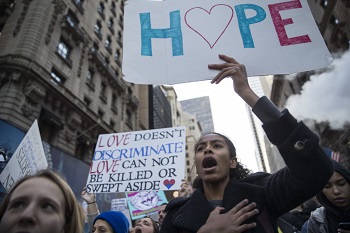Home » Posts tagged 'community'
Tag Archives: community
Remembering 9/11: Forgetting None
 As we remember the terrible devastation, sorrow and inhumanity those many years ago on 9/11, let’s also remember how people and institutions came together around the world to support one another on that day and since. Let’s remember also how our own Unitarian Universalist organizations, the UU Service Committee and UU Association, together raised funds from members/congregants across the country to support the families and loved ones of 9/11 victims who would not receive support from “traditional” charities.
As we remember the terrible devastation, sorrow and inhumanity those many years ago on 9/11, let’s also remember how people and institutions came together around the world to support one another on that day and since. Let’s remember also how our own Unitarian Universalist organizations, the UU Service Committee and UU Association, together raised funds from members/congregants across the country to support the families and loved ones of 9/11 victims who would not receive support from “traditional” charities.
Undocumented workers’ families were ineligible for support from the government and many charities – even when the victims were the sole support of the family. Because of their status, undocumented workers had toiled in the shadows of the Twin Towers in obscurity, and families had no proof that the worker had held a job. Additionally, the families lacked the class advantage that could open doors to their new country’s legal system.
In 2001, legal marriage was not yet available for lgbtq+ individuals. Without a marriage license, the partners of 9/11 victims and their children were often ineligible for support from most organizations. The UU Service Committee worked with immigrant rights and lgbtq+ groups on the ground in New York City, Washington, D.C. and Pennsylvania to make sure that classism and other forms of bias could not keep families from receiving the help and support they needed.
Additionally, UUSC continued to support those affected by the tragedy. For example, it funded clinics addressing the rise in respiratory illnesses in communities of color that were in the direct path of the massive dust clouds that filled the air following the towers’ collapse. And, of course, individual UU congregations and groups were on the front lines to support 9/11 survivors and families in the immediate aftermath and beyond.
So, as we remember the events of 9/11, let us remember also to continue the fight against classism and bias. And, as UUs, let us continue to press for lgbtq+, BIPOC and immigrant rights – all under attack from organized internal forces. Remember everyone!
Down with CRT?
“George Floyd protest” by vpickering
Critical Race Theory, or CRT, is an academic and legal framework that denotes that systemic racism is part of American society — from education and housing to employment and healthcare. Critical Race Theory recognizes that racism is more than the result of individual bias and prejudice. It is embedded in laws, policies and institutions that uphold and reproduce racial inequalities.
— Legal Defense and Educational Fund, Inc.
Critical Race Theory, or CRT, became the new rallying cry for people on the far right in 2021. A year before, there were rumblings against the highly academic and legal framework. But the rhetoric reached an entirely new level when then-President Donald Trump signed an executive order in 2020 prohibiting federal agencies from conducting diversity, equity and inclusion training. He justified his order by claiming that such training represented reverse racism and were part of the left’s efforts to indoctrinate people into its way of thinking through CRT.[i]
By falsely calling any discussion of racism, white supremacy, inclusion and/or equity CRT, those spreading this false narrative have succeeded in convincing even moderates – and not a few liberals – that the concept is divisive and harmful for children and harmful for American society as a whole.
Causing Harm and Shame
According to Florida Governor Gov. Ron DeSantis, CRT teaches kids to hate each other and is “state-sponsored racism.” Texas Senator Ted Cruz suggests that CRT causes white children to feel shame, shame that some of his fellow conservatives say can cause mental illness in these children. According to Spectrum News, Cruz tells fellow conservatives that they can spot CRT in texts that use the word “equity” frequently.
Armed with this misinformation, thousands of parents have stormed school committee meetings across the United States. The situation became so extreme that Reuter’s news agency commissioned a study on the issue. It reveals that more than half of the 31 school boards contacted said they had added extra security at meetings, limited public comment or held virtual meetings when in-person gatherings became too chaotic. (The 31 school boards contacted were just a microcosm of those actually affected.) In Loudoun County, Va., a letter was sent to one of the adult children of Brenda Sheridan, a school board member. It threatened to kill Sheridan and her child unless she left the board.
Sadly, the disruption has been rewarded. According to a Time.org April 14, 2022, article, 42 states have introduced bills or taken other steps that would restrict teaching CRT or limit how teachers can discuss racism and sexism. Seventeen states have imposed these bans and restrictions either through legislation or other avenues. Some ask parents, teachers and/or administrators to “turn in” teachers or professors who teach CRT or some of its supposed concepts. Voice of America reports that a bill passed in Indiana “permits parents to bring complaints and legal action against schools.”
But is CRT actually causing this harm and shame or is it our country’s inability at best and outright refusal at worst to deal honestly with racism and the long-term results of white supremacy?
I argue that in the hands of people like Cruz and DeSantis, CRT stands for Conservatives’ Revisionist Truthlessness.
Unintentional Truth?
Dr. Greg Ganske, former congressman from Iowa and a vocal CRT critic, seems to contradict his own anti-CRT stance when he argues that CRT has two common themes. According to Ganske, CRT maintains that white supremacy preserves power through the law, and the relationship between law and racial power must be transformed.
But maybe Ganske is simply being honest. As a plastic surgeon and former political operative, he has benefited from the power that white supremacy has brought him, and perhaps he does not want laws to change to level the playing field and provide the dreaded “equity” that those waging war against CRT malign and fear.

CRT foes fear the racial awakening brought about by the murder of George Floyd. For many white Americans, the Floyd video was the first time they saw the effects of the raw racism that has plagued our country for centuries. As they marched through the streets, white Americans and others around the world committed to ending racism and white supremacy, understanding the damage that racism does to them as well. That commitment sparked fear in the hearts and souls of people who believe that the end of white supremacy will siphon off their power.
Personally, as someone who works on issues of class and racial justice, I do not see equity through a zero-sum lens. I do not believe that because you have enough I must go without the things that I need. I think we can both have our needs met – with enough left over for getting not only what we need but some of what we want also.
I do believe, however, that some people, institutions, nations or world regions might take so much that there is little left. That is where CRT comes in and provides a process by which we can make America, and the rest of the world, truly great.
How Does CRT Work?
When Kimberlé Crenshaw, a law professor at UCLA and Columbia, coined the phrase Critical Race Theory in 1989, she saw it as a tool to explain how laws and legislation in the United States are deeply rooted in systemic racism. [ii]
For example, in the early 1700s, shortly after the first Africans were brought to the United States, laws were passed to make it illegal for enslaved people to learn to read and write. Slavery was enshrined in the Constitution in 1787. The Naturalization Act of 1790 denied citizenship to anyone who was not white. The 1800s alone, saw the passing of myriad anti-white legislation, including the Chinese Exclusion Act, Indian Removal Act, Jim Crow laws and many more.
Racist laws continued well into the 1900 and 2000s. One example of this is the game-changing legislation that provided housing loans for WWII GIs. Written into the legislation was language explicitly denying loans to African American veterans. Another example? Alabama did not alter language that prohibited miscegenation until 2000.
Recent anti-CRT laws are just the latest in legislation intended to continue inequity and racism. But instead of causing division, CRT helps us understand that racism is indeed baked into the history of the United States and provides the framework that can help us bring about racial healing together as a community.
The Way Forward
Seeing exactly how laws and societal practices have normalized and institutionalized racism allows us to craft legislation which can undo the harm caused. Just as important, it helps us face the truth as a nation, see the scope of the problem and change practices – and hearts – as well. In the words of Mari Matsuda, a law professor at the University of Hawaii and an early developer of critical race theory, “We have a serious problem that requires big, structural changes; otherwise, we are dooming future generations to catastrophe.”[iii]
Ultimately, CRT will have the opposite effect of the one fear mongers predict. Instead of making white children and people feel bad, it will motivate them to continue to work with BIPOC peers to help the United States to live up to its ideals. We can be the shining beacon for the world that the writers of the Constitution – despite their own shortcomings – envisioned for the generations before them.
And, yes, I am down on the way some people use CRT, when it mean Conservatives’ Revisionist Truthlessness.
[i] Center for Law and social Policy: https://www.clasp.org/blog/how-abolishing-critical-race-theory-preserves-white-power/
[ii] Ibid
[iii] Critical Race Theory: A Brief History, New York Times: https://www.nytimes.com/article/what-is-critical-race-theory.html
Say Yes to Resistance
The election outcome was a shock – but wasn’t something new. Throughout U.S. history we’ve had waves of right-wing populism, when people bought into explanations of their economic hardships that scapegoat other marginalized groups and reject traditional elites. This election was a right-wing populist upsurge that few of us saw coming. We underestimated the number of voters willing to accept racism, sexism, Islamophobia and immigrant-bashing in a candidate.
But we also saw a surge of progressive populism – the kind that criticizes economic systems and the rich – in the strong showing for Bernie Sanders’ campaign and the popularity of Senator Elizabeth Warren. And that can be our source of hope now, that the progressive populists could organize social movements and take over the Democratic Party.
Progressive Populism
The mainstream Democratic Party used to have more progressive populism in its platform, its rhetoric and its political actions, from the 1930s through the ‘70s. But I’m one of many leftists who started criticizing the party in the ‘90s for its turn to the right, for ignoring working class and poor people harmed by de-industrialization and making trade deals like NAFTA and the TPP. In particular, the national Democrats ignored white working class men, the only race/class/gender cluster who actually has lower income today than their fathers and grandfathers.
Democratic leaders didn’t treat falling wages and unemployment as true crises. After the crash they accepted the bailout of “too big to fail” banks and they didn’t push enough for a bailout for foreclosed homeowners. Gradually over the last 30 years the Democratic Party began to get more of its campaign funding from Wall Street, big corporations and wealthy individuals, and began to operate under the delusion that a coalition of well-off coastal liberals and urban people of color could swing national elections – which clearly isn’t always true. They took union support for granted, not realizing that the rank-and-file don’t necessarily vote with the leaders.
“We need to reach out and build personal and political ties with those Trump voters who aren’t committed haters, but whose economic woes and worries we can empathize with. Our first UU principle about the inherent worth and dignity of every person is hardest to put into practice with people we have profound disagreements with.″
Many Democratic leaders also fell into the cultural classism that some of us coastal liberals fall into, of regarding the Midwest as a flyover zone full of gun owners or Christian fundamentalists who are too stupid to have a reasoned political conversation with. It’s important to remember that Donald Trump won the majority of votes from college-educated and high-income whites as well, so we need to be on the alert for classist demonizing of white working class people. This is a white right-wing populist uprising that cuts across classes.
Those of us who didn’t see this coming need to ask ourselves whose voices we hear on a regular basis, why more of the voices of the disaffected rural and Rust Belt white people weren’t on our radio programs, in our newspapers, on our Facebook feeds – and in our personal circles. We didn’t hear them.
We need to stop huddling in our liberal echo chamber talking about how “they” got it wrong and we are right about everything.
Reach Out, Build Ties of Solidarity
“It will take a mass progressive movement to turn our country in a healthier direction.”
Instead we need to reach out and build ties of solidarity, both personally and politically: ties with people already being targeted by street harassment from emboldened bullies who are spray-painting racist slurs and yanking off head scarves; ties with those likely to be politically targeted for deportation and stripped of union rights, health coverage, abortion rights, religious freedom and affirmative action.
But we also need to reach out and build personal and political ties with those Trump voters who aren’t committed haters, but whose economic woes and worries we can empathize with. Our first UU principle about the inherent worth and dignity of every person is hardest to put into practice with people we have profound disagreements with. We may need to put aside disagreements over gun ownership and find common ground in preventing Wall Street and multinational corporations from taking over our democracy and our economy.
 It will take a mass progressive movement to turn our country in a healthier direction. Only a multiracial and cross-class mass movement can limit how much damage the Republican Senate, House and President can do in these coming years. A mass movement could light a fire under the Democratic Party to nominate progressive populists like Bernie Sanders and Senator Elizabeth Warren.
It will take a mass progressive movement to turn our country in a healthier direction. Only a multiracial and cross-class mass movement can limit how much damage the Republican Senate, House and President can do in these coming years. A mass movement could light a fire under the Democratic Party to nominate progressive populists like Bernie Sanders and Senator Elizabeth Warren.
We need a responsive party that is loudly pro-labor, that pushes for full employment policy, that will be firmly anti-sexist and anti-racist, that will tell the truth about how crucial immigrants are to economic growth, and that will treat income inequality as a national crisis. The movement and the party I’m imagining would put forward a progressive populist message that will make sense to economically struggling people of all races and regions.
It’s too early know what effective resistance will be organized to stop the rightward lurch of our country, but when it happens, when you get invitations to join organizations, to boycott, to go to protests and to speak up, please say yes. All of us will need to say yes, say yes, and say yes again.
Betsy Leondar-Wright spoke these words on a panel about race, class and gender in the presidential election, at First Parish UU Church of Arlington, MA on November 13. She is on the board of Class Action (www.classism.org) and on the steering committee of UU Class Conversations (www.uuclassconversations.org ).
Save the Tree, but What About We?

By Bethany Ramirez
If all politics are local, there is currently a dust up about renovations to the park across the street from me. Plans include the removal of a tree that interferes with the community garden area. But the renovations were halted before they began because of a movement to save the tree.
And recently there have been some members of the community (certainly not most) who have made dismissive comments about the community garden in a way that makes me want to unpack some classism.
When Your Justice Collides with Ours
When we first came to look at this apartment, we were quite excited to discover that the community gardens were so close. We were even more excited to learn that there was already a fenced-in garden space in our yard, so we did not need to worry about the waiting list for a community plot. It had not been used for several years, so we invested a lot of time and money into cleaning out concrete and patching the fence.
However, our garden is struggling. Since the garden was last used, one of the trees has grown to cast shade over most of the space. And since the landlord does not want tenants wasting water, there is no water hooked up to the hose – a problem when we are approaching drought conditions.
In order for us to garden next year, either the landlord has to fix both of these problems, or we will have to use the community garden across the street. We rent. We cannot just move the garden location to somewhere else in our yard. Many neighbors don’t have space to garden at all. This is what community gardens are for. In fact, we are sharing our garden with friends from the next town who are on a waiting list for a community garden where it could take them years to get a plot.
There are class issues in the dismissive comments people have made about the community gardens. There are class issues in being able to afford to garden at all in the first place. And there are class issues in claiming a tree is more important than community gardens that have nowhere else to go. We talk a lot about how the poor can’t afford fresh produce, and we’re not letting them grow their own, either.




